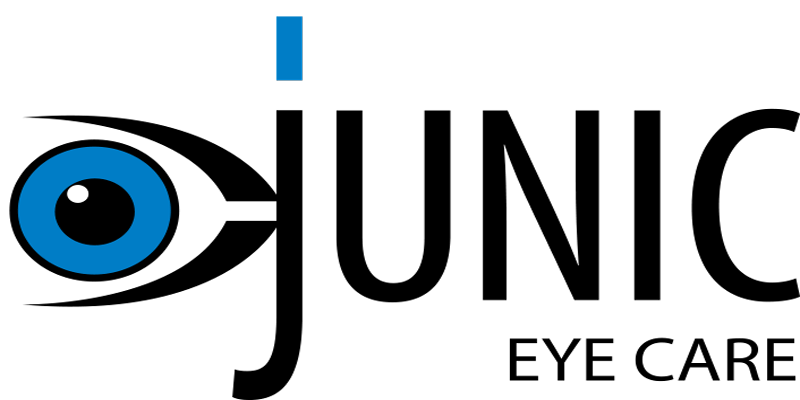Are you or a loved one struggling with droopy eyelids and searching for effective treatment options? Many people believe that droopy eyelids are just a cosmetic issue, but in reality, they can impact vision, though loss of peripheral awareness and blurred eyesight. According to a UK report, 11.5% of adults over the age of 55 have some degree of ptosis (droopy eyelids).
Hello, I’m Juliet Menakaya, the Owner and Principal Optometrist at Junic Eye Care. At our practice in Canberra, we pride ourselves on providing comprehensive eye care for patients of all ages, from infants to octogenarians. My passion is helping individuals achieve their best possible vision and eye health, and I’m dedicated to offering personalized, empathetic care to each of our patients. Whether you’re seeking treatment for ptosis or other eye conditions, I’m here to guide you through every step of your journey to better vision.
Your vision is important—secure your appointment with our experienced team at Junic Eye Care right now.
Understanding Ptosis
What is Ptosis (Droopy Eyelid)?
Ptosis (pronounced “toe-sis”), commonly known as a droopy eyelid, refers to a condition where the upper eyelid droops over the eye. This can happen in one or both eyes. The drooping can be mild, barely noticeable, or it can be severe enough to cover part of the pupil, potentially obstructing vision. Ptosis can occur at any age and may affect both children and adults. This condition is not merely a cosmetic issue; it can significantly impact one’s vision and quality of life, especially in young children whose visual development is crucial.
Causes of Ptosis
There are several reasons why someone might develop ptosis. Congenital ptosis is present at birth and often results from underdeveloped eyelid muscles. Age-related ptosis is more common in older adults as the muscles that lift the eyelid can weaken over time. Injury-induced ptosis can occur if the eyelid or surrounding muscles are damaged, while disease-related ptosis might stem from conditions affecting the nerves or muscles, such as myasthenia gravis or a tumour.
To learn more about ptosis watch the following video from the Dr. Kopelman YouTube channel.
Symptoms and Diagnosis
Common Symptoms of Droopy Eyelid
How can you tell if your child has ptosis? One of the most obvious symptoms is the drooping of the upper eyelid. This can range from a slight sag to a complete closure of the eyelid.
Another tell-tale sign is vision obstruction, where the drooping eyelid partially or fully blocks the pupil, affecting your child’s ability to see clearly. Children might also exhibit head tilting or eyebrow raising as they try to compensate for the blocked vision, often straining to see under or around the drooping eyelid. These symptoms can lead to eye strain and fatigue, making everyday activities challenging for your child.
Diagnosing Ptosis
Diagnosing ptosis involves a comprehensive approach. Initially, a detailed medical history review helps identify any underlying causes or related conditions. Understanding the onset and progression of the drooping eyelid provides valuable insights. This is followed by a comprehensive eye exam, where we assess the eyelid’s position, muscle strength, and overall eye health. Additional imaging tests, such as CT or MRI scans, might be recommended to get a clearer picture of the muscles and tissues around the eye. These tests help in identifying any structural issues or underlying diseases contributing to the ptosis.

Droopy Eyelid Treatment in Canberra
Non-Surgical Treatments
Botulinum injections, commonly known as Botox, offer a non-surgical treatment for ptosis (droopy eyelid), particularly when caused by muscle dysfunction. Botox works by temporarily paralyzing the muscles responsible for eyelid drooping, lifting the eyelid, and improving the visual field.
This minimally invasive procedure involves injecting small amounts of botulinum toxin into targeted muscles, with effects appearing within days and lasting several months, requiring periodic repeats.
While generally safe, Botox injections should be administered by trained medical professionals to minimize side effects. In Australia, optometrists do not administer Botox, which is typically done by ophthalmologists or plastic surgeons. We can refer patients seeking Botox for ptosis to qualified medical professionals to ensure safe and effective treatment.
Surgical Treatments
For more pronounced cases, surgical intervention may be necessary. Surgery for children with ptosis typically involves levator muscle tightening, where the muscle responsible for lifting the eyelid is shortened to improve eyelid elevation.
Another option is eyelid muscle attachment, which connects the eyelid muscles to the forehead muscles, helping lift the eyelid more effectively. Post-surgery care for children is crucial, including follow-up visits to monitor healing and ensure optimal results.
Adults with ptosis also have several surgical options. Outpatient procedures are common, allowing patients to return home the same day. Different types of surgical procedures can be employed based on the severity and cause of the ptosis, including levator resection or frontalis sling operation. Post-surgery care for adults includes protecting the eye from infection and following specific guidelines to promote healing and prevent complications.
Choosing the right treatment depends on various factors, including the patient’s age, the severity of the drooping, and the underlying cause. At Junic Eye Care, we carefully evaluate each case to recommend the best possible treatment plan, ensuring both functional and aesthetic improvements.
Blepharoplasty Treatment
What is Blepharoplasty?
This surgical procedure is designed to repair droopy eyelids by removing excess skin, muscle, and sometimes fat. Upper blepharoplasty focuses on the upper eyelid and is often recommended for patients with significant drooping that impacts their vision or causes discomfort. The procedure involves making an incision along the eyelid’s natural fold, removing the excess tissue, and tightening the muscles for a smoother, lifted appearance. Recovery typically involves a few days of rest, with minor swelling and bruising that gradually subsides.
Lower Blepharoplasty
Lower blepharoplasty targets the lower eyelid and is mainly performed to address puffiness, bags, or wrinkles under the eyes. This procedure can be especially beneficial for patients who have both upper and lower eyelid issues. During the procedure, an incision is made just below the lower lash line, allowing for the removal of excess fat and skin. Recovery from lower blepharoplasty requires careful post-operative care, including keeping the head elevated and avoiding strenuous activities to ensure proper healing.
Risks and Complications of Blepharoplasty for Droopy Eyelid Treatment
While blepharoplasty can be highly effective, it’s important to be aware of potential risks. Common risks include infection, bleeding, and temporary vision changes. However, with careful surgical technique and proper post-operative care, these risks can be minimized. Managing complications involves following all post-surgery instructions, attending follow-up appointments, and promptly reporting any unusual symptoms to your optometrist.
At Junic Eye Care, we provide comprehensive care to ensure that blepharoplasty and other treatments are as safe and effective as possible. Our goal is to help you achieve better vision and improved quality of life with minimal discomfort.
Importance of Early Detection of Ptosis
Why is early detection of ptosis crucial? Untreated ptosis can lead to significant vision problems, especially in children. When the eyelid covers part of the pupil, it can cause amblyopia, commonly known as lazy eye, which affects visual development. This can result in long-term vision issues if not addressed promptly. Additionally, children with ptosis might experience developmental issues due to impaired vision, impacting their ability to read, learn, and engage in social activities.
Early intervention provides the best chance for successful treatment and improved outcomes. By addressing ptosis early, we can prevent these complications and help ensure that children develop normal, healthy vision.
Tips for Parents of Children with Droopy Eyelid
How can you best support your child if they have ptosis? Recognizing ptosis early is vital. Keep an eye out for signs such as frequent head tilting, eyebrow raising, or complaints about vision. If you notice these symptoms, schedule an eye exam as soon as possible. Regular eye exams are critical in detecting ptosis early and monitoring its progression. They also help in identifying any associated vision issues that might arise due to the droopy eyelid.
Supporting your child through droopy eyelid treatment involves more than just medical care. At home, you can help by encouraging adherence to treatment plans, whether that involves wearing an eye patch, using corrective lenses, or preparing for surgery. Make the treatment process a positive experience by explaining the benefits and celebrating progress. Additionally, creating a comfortable and supportive environment at home can help your child feel more at ease with their condition and the treatment process.
Involvement in activities that promote visual development, like reading and playing visually stimulating games, can also be beneficial. Understanding and empathy from parents go a long way in helping children cope with the challenges of ptosis. By staying informed and proactive, you can make a significant difference in your child’s visual health and overall well-being.
CONCLUSION
This blog covers the causes, symptoms, and treatment options for ptosis (droopy eyelid), including both non-surgical and surgical solutions. Blepharoplasty is a routine operation that can help in most cases, but early intervention is important.
Untreated ptosis can result in permanent vision loss and developmental issues, especially in children.
Take control of your eye health today—schedule your consultation with Junic Eye Care and start your child’s path to clearer vision.
To visit our optometry practice, click the “Book Online” button at the top of the page or call (02) 6152 8585 today.
You’ll find our clinic conveniently located in the Molonglo Health Hub, just a short 10 minute drive from central Canberra, with plenty of free parking when you get here.

CANBERRA OPTOMETRIST
Juliet obtained her Doctor of Optometry degree from the University of Benin, Nigeria in 2006. She completed an internship programme before migrating to Australia, where she completed a master’s degree in public health at the University of Sydney in 2014. Following this, Juliet obtained a Master of Orthoptics from the University of Technology Sydney (UTS) in 2017.
Juliet has completed her competency in optometry examination with OCANZ (Optometry Council of Australia and New Zealand), and obtained her ophthalmic prescribing rights from ACO (Australian College Of Optometry Victoria). Juliet has worked in various positions, including retail Optometry, the Ophthalmology Department at Canberra Hospital, and more recently, at the John Curtin School of Medical Research (ANU).
As a dedicated Canberra optometrist, Juliet is passionate about helping people with low vision, and binocular vision anomalies hence her interests in Low Vision Rehabilitation, Eccentric Viewing Training and Paediatric optometry.

